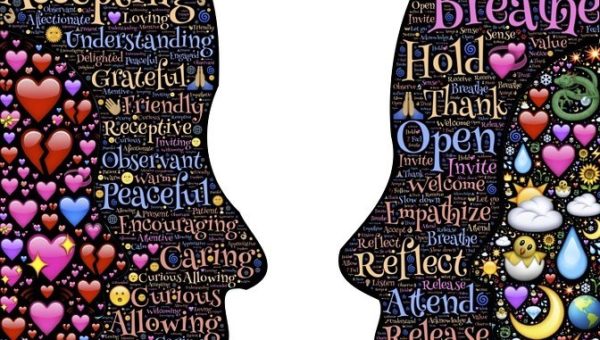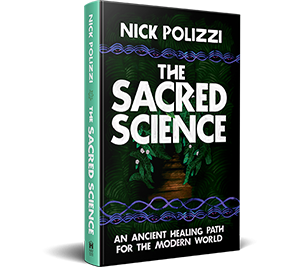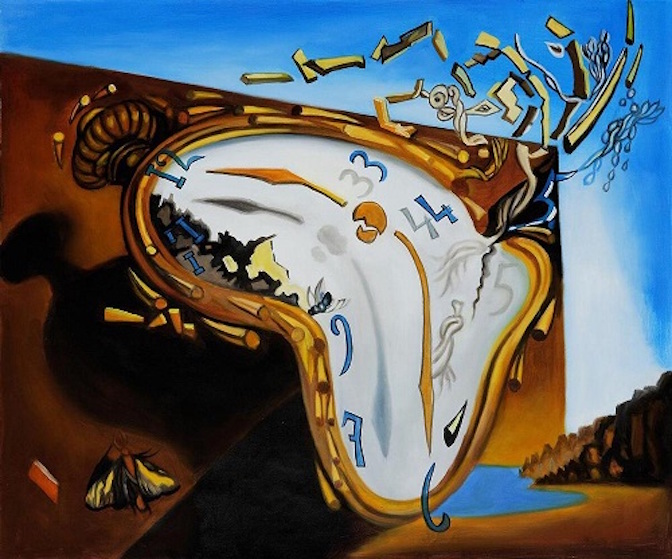
When I was first invited to a non-violent communication workshop, I thought the same thing that you might be thinking now, I’m not a violent person and I don’t ever intend to harm anyone with my words so why would I need to learn about this? Well, after learning about it, I can confidently say, trust me – you do!
The label of non-violent communication seems pretty harsh, especially because it is just a term for our regular old ways of communicating, but once you understand what this is all about it becomes easy to see that how we communicate on a daily basis to our children, friends, family members and most importantly, ourselves, is actually damaging and can cause a whole slough of mental health issues that we may have otherwise not realized. Words are powerful, every word we speak is like putting an intention into the universe.
First, A Brief History Lesson
Founded by Dr. Marshall B. Rosenburg Ph.D., after growing up in a tremulous neighbourhood in Detroit Michigan, he developed an interest in developing new forms of communication that could provide peaceful alternatives to all of the violence that he encountered. His avid interest led to a doctorate in clinical psychology from the University of Wisconsin in 1961; combined with his experience and study of comparative religion, all led towards him developing the Nonviolent Communication (NVC) process. According to the official NVC website,
“A dedicated teacher, peacemaker and visionary leader, Dr. Rosenberg led NVC workshops and international intensive trainings for tens of thousands of people in over 60 countries across the world and provided training and initiated peace programs in a number of war-torn areas including Rwanda, Burundi, Nigeria, Malaysia, Indonesia, Sri Lanka, Sierra Leone, the Middle East, Colombia, Serbia, Croatia, and Northern Ireland. He worked tirelessly with such groups as educators, managers, mental health and health care providers, lawyers, military officers, prisoners, police and prison officials, clergy, government officials, and individual families.”
What Exactly Is “Violent Communication?”
According to Dr. Rosenburg, “If “violent” means acting in ways that result in hurt or harm, then much of how we communicate—judging others, bullying, having racial bias, blaming, finger pointing, discriminating, speaking without listening, criticizing others or ourselves, name-calling, reacting when angry, using political rhetoric, being defensive or judging who’s “good/bad” or what’s “right/wrong” with people—could indeed be called ‘violent communication.’ “
If there isn’t at least one example in there that sounds like you or has sounded like you at some point in your life then you are doing pretty good. The vast majority of us communicate in this way without ever realizing how damaging and dangerous this can be. This is just a part of our culture and has been for so long that we don’t often think twice about it.
And What Is Non-Violent Communication?
According to the NVC website, Non-Violent Communication involves the integration of four core things:
- Consciousness: a set of principles that support living a life of compassion, collaboration, courage, and authenticity
- Language: understanding how words contribute to connection or distance
- Communication: knowing how to ask for what we want, how to hear others even in disagreement, and how to move toward solutions that work for all
- Means of influence: sharing “power with others” rather than using “power over others”
And It’s Three Main Desires Are To:
- Increase our ability to live with choice, meaning, and connection
- Connect empathically with self and others to have more satisfying relationships
- Sharing of resources so everyone is able to benefit
Nonviolent Communication is a giving and receiving of messages that centers on two very important questions: 1. What’s alive in us? and 2. What can we do to make life more wonderful?
So, with that understanding, it may be easier to understand how much of how we are communicating is in fact, violent and can certainly be vastly improved. Our words can either put someone down, make them not feel good enough, invoke fear, self-hatred, self-consciousness, and even a lack of self-love or they can uplift, inspire, promote personal responsibility, compassion, empathy, deep understanding and all the tools that one needs to thrive.
By clearly expressing how we are feeling when someone says something that hurts us, it opens up a whole new level of compassion and understanding that may have otherwise never been there. We often don’t realize how disconnected our everyday conversations are. This is about being to the point and upfront and understanding and recognizing ones needs and boundaries. Really, the NVC process includes a whole course worth of information, so this article here is merely an intro that just barely scratches the surface. We’ll just call this article here an intro, as there will be a lot more to follow.

Inspiration and all our best content, straight to your inbox.
However, if you are having difficulties with your children, co-workers, family or in your romantic relationship and are feeling intrigued and inspired by this method of communication, you can do a quick online search to see if there are any classes available in your area, and there are also a ton of resources available online. I found this super handy resource from WikiHow while researching for this article. Be sure to check out the super helpful and informative book written by the founder of NVC himself, Non-Violent Communication: A Language of Life.
Stay tuned for much more to come on CE about this method of communication that will change the world.
Much Love
The Shamanic Way of Healing
The Sacred Science follows eight people from around the world, with varying physical and psychological illnesses, as they embark on a one-month healing journey into the heart of the Amazon jungle.
This incredible true story details how ancient shamanic healing methods can work to shift our bodies and minds. here.
Read the incredible true story here.
The Shamanic Way of Healing
8 people with illnesses go into the jungle to heal naturally… read the incredible true story here.
Source Article from http://feedproxy.google.com/~r/Collective-evolution/~3/CJIl3l4nAI0/
Related posts:
Views: 0
 RSS Feed
RSS Feed

















 April 6th, 2018
April 6th, 2018  Awake Goy
Awake Goy 



 Posted in
Posted in  Tags:
Tags: 
















